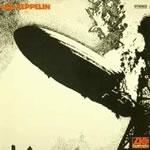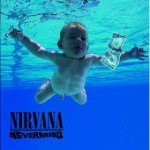Who: 8 out out 9 of the Wu Tang Clan plus some Wu cousins
The word: Long time friends "Elp" and "'Lish" offered tickets last minute (ayo, thanks again!) The venue was close, a stage I actually spun on four years ago for some sort snowboard-Red Bull promo party. This would be foolish to pass up.
Heading north, I listened to a long ago aborted comprehensive ARM 18 mix series called “Enter the Wu-brary.” Compiled in 2002 from wax, radio dubs and a healthy dose of Audio Galaxy swipes, the series met its maker when a crashed hard drive sizzled, snapped and caught fire. Protons Electrons Always Cause Explosions.
Listening to the first two volumes of this mix, hit singles (“Bring the Pain,” “CREAM”) sounded rugged and raw, I repeat, rugged and raw, astonishing me the Clan impacted MTV and urban radio 15 years ago. I nodded seriously to classic album cuts (“Rawhide,” “Ice Water”) that detailed the mythology of the Wu and fast-forwarded through obscure mixtape fodder that seems like fast food now (“American CREAM Team” or “Grid Iron Rap”). The music was the uncompromising and unabashed sound of 90s east coast hip hop and yet unique unto itself as the Clan has no imitators.
I could not think of any single pop cultural antecedent of what this crew has accomplished so here is an elaborate bloated allusion: The Wu Tang Clan from the 1990s had the bravado of the Furious Five, the kinetic energy of Kung Fu, the funky noise of Public Enemy, overseen by a producer/MC who had the meticulousness of a Stanley Kubrick.
I could not think of any single pop cultural antecedent of what this crew has accomplished so here is an elaborate bloated allusion: The Wu Tang Clan from the 1990s had the bravado of the Furious Five, the kinetic energy of Kung Fu, the funky noise of Public Enemy, overseen by a producer/MC who had the meticulousness of a Stanley Kubrick.
 |
| Give an Ezra Pound and a bear hug |
 |
| Older Gods |
Rap concerts are notoriously long, loud, tardy anti-climatic affairs. Rap music has thrived on using studio trickery to create an almost cinematic experience during playback, see above ride to the concert. This rarely translates well live on stage unless you are seeing old school veterans whose singular purpose is to rock the crowd. So if you go to such an affair, you prepare for the worst and find yourself amused by whatever scraps are thrown the audiences’ way.
Syracuse’s Woodfellas were the undercard. (There is a challenge to this group's credentials. See comments below) To their credit, they executed their performance well but were undermined by their material that made 90s white rap groups The Goats or Blood of Abraham sound truly dynamic and talented. While their posse of supporters were thick in one section, ultimately the biggest mock cheer came up as they left stage and their signage was removed and the Wu “W” banner descended.
 |
| Can you hear him now? |
For LA, "warming up the crowd" meant rapping menacing gun talk over his pre-recorded lyrics. For a little bit. Most of the time, he chanted “Turn me up, soundman, turn me up” endlessly on beat. I thought it was his new single. Over and over again he rapped “Turn me up, soundman, turn me up” until front of house obliged and brought the volume up to a rumbling earthquake. When he did rap, LA showed lyrical dexterity that far outshined the plodding Woodfellas and did, I suppose, increase the anticipation for the Wu.
Surprisingly, the Clan hit the stage maybe 10 minutes after LA the Darkman, getting the show on the road by 10:30 pm. This had to be some sort of rap concert world record. The Clan began by ripping through the first 3 tracks of 36 Chambers non-stop: “Bring Da Ruckus,” “Shame On a...” and “Clan In Da Front.” They continued the frenzy with other highlights from the first LP, celebrated singles from solo LPs (“Liquid Swords,” “Bring the Pain,”) and a half a dozen Wu Tang Forever cuts. The performance was crisp, each song not lasting more than a few verses, 3 minutes tops. Each rappers performance was surprisingly tight and coherent, save some flubs by the GZA and the hoarse voice of Inspecta Deck. There was little pauses or asides between songs, pressing the show forward with an enjoyable wonder-what-song-is-next vibe. |
| New testament |
 |
| Old testament |
 |
| Clan in the front |
 |
| Cappa (left) thirsty for his catalog Rae (right) rapping criminologist |
 |
| When I die, my seed'll be ill like me |
 |
| Use the Force |



Wu where? The unopened 21st century chambers
The Rebirth tour's intent is to ensure the back catalog of the Wu Tang Clan is understood as classic and undeniable today as it was then. There was very little, “Yo, I got a new album coming out and here's the first single...” type promotion from any of the members save for a moment at the end. In fact, there were two gracious monologues by Raekwon and Method Man thanking fans for their fandom. Meth went so far as to say that Stoudsburg was “liver” than Pittsburg but maybe he tells every crowd. Regardless, these are effective tools to oblige a fanbase.
 |
| Boom, and this, yaknowhati'msayin? any color you want |
 |
| GZA (left) and Deck (right) authors not actors of modern day operas |
I was told by Audiogoldrush partner Boogieman that sometimes the Clan's music doesn't necessarily translate to overseas audiences; Wu tracks lack melody, rumbling and booming, short clipped loops move in and out of the mix randomly. Earphone masterpieces to be sure but there are no spirit to move your limbs other than to nod your head when hearing the Clan. Hearing their music at 500 million decibels I have to agree. But only a few songs had any sense of musicality, these were tracks entirely propelled by the cleanly looped soul/R&B samples underneath such as “'97 Mentality.” There is no doubt; the Wu Tang is driven by the personality of each Clan member and their respective lyrics, period.
 |
| The absent Abbot |
The RZA graduated from being simply a rapper and producer a long time ago and so maybe it was inevitable. The last song of the night was oddly “Da Rockwilder” by Method Man, sans Redman as the other members began to stroll off the stage. Along with RZA's absence, it was the only moment where you could see where the pieces of the Wu Tang puzzle begin to crack, where solo careers, different 'hoods, motives and priorities began to pull at the seams that keeps this thing together. Really, it was evidence that these dudes are bonded primarily by songs like “Protect Ya Neck” that are almost 20 years old. When you hear of a successful nationwide, 8-week tour playing such “oldies,” it is hard not to realize that the future of the Clan's music is preserving their past.
Above video showcases DJ Allah Mathematics, Poppa's Wu sermon
and Forever favorites "Reunited" and "For Heaven's Sake"
from Rebirth Tour Chicago stop, 1/8/11






















